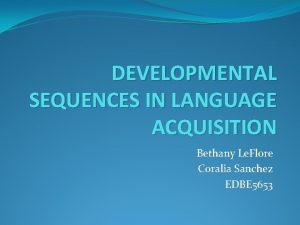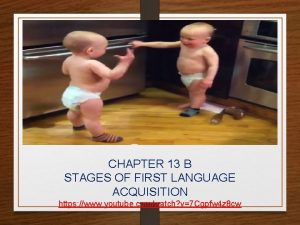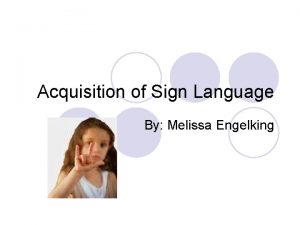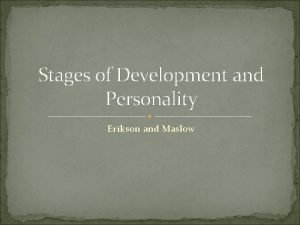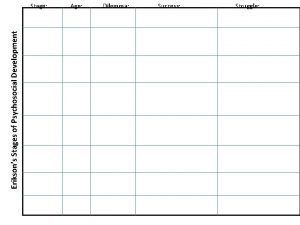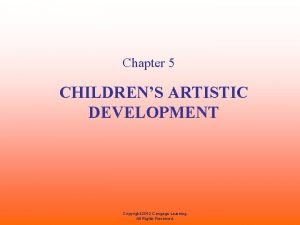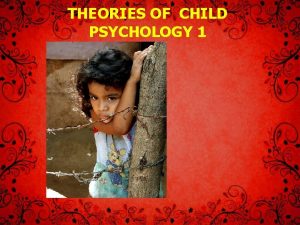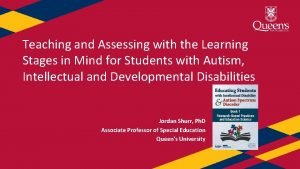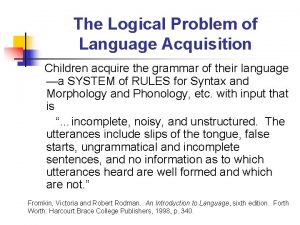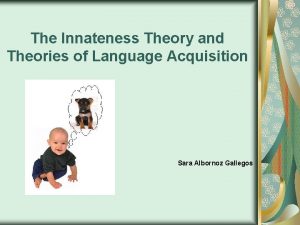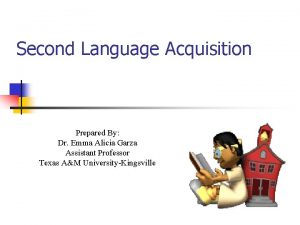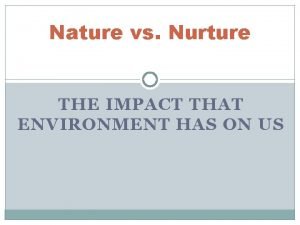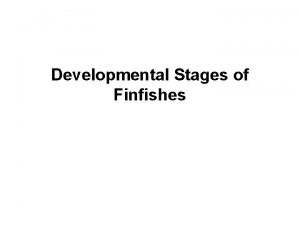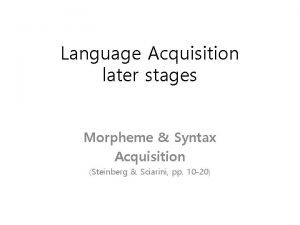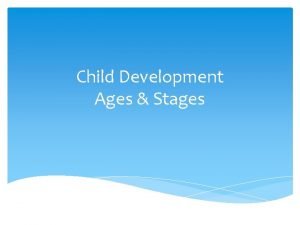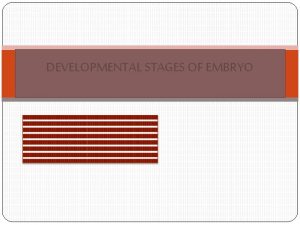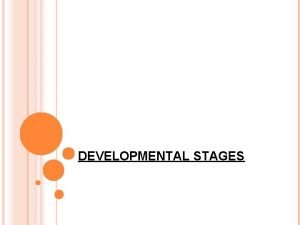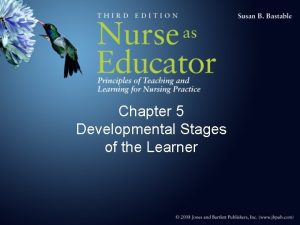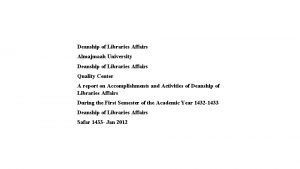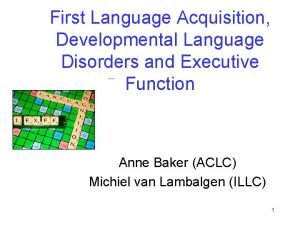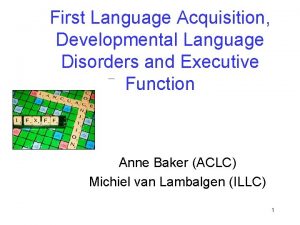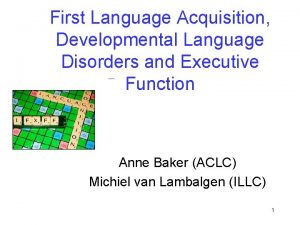Lecture 5 Language acquisition Developmental stages Deanship of


















- Slides: 18


Lecture 5 Language acquisition Developmental stages ﻋﻤﺎﺩﺓ ﺍﻟﺘﻌﻠﻢ ﺍﻹﻟﻜﺘﺮﻭﻧﻲ ﻭﺍﻟﺘﻌﻠﻴﻢ ﻋﻦ ﺑﻌﺪ Deanship of E-Learning and Distance Education [ ] All Rights Reserved for KFU © ﺟﻤﻴﻊ ﺍﻟﺤﻘﻮﻕ ﻣﺤﻔﻮﻇﺔ ﻟﺠﺎﻣﻌﺔ ﺍﻟﻤﻠﻚ ﻓﻴﺼﻞ

stics Lecture 5 Developmental stages Universal milestones. p. 106 ﻋﻤﺎﺩﺓ ﺍﻟﺘﻌﻠﻢ ﺍﻹﻟﻜﺘﺮﻭﻧﻲ ﻭﺍﻟﺘﻌﻠﻴﻢ ﻋﻦ ﺑﻌﺪ Deanship of E-Learning and Distance Education [ ] All Rights Reserved for KFU © ﺟﻤﻴﻊ ﺍﻟﺤﻘﻮﻕ ﻣﺤﻔﻮﻇﺔ ﻟﺠﺎﻣﻌﺔ ﺍﻟﻤﻠﻚ ﻓﻴﺼﻞ

stics Lecture 5 Pre-birth to 12 months Pre-birth sensitivity to language. p. 107 • Hearing begins to develop around 18 weeks of gestation. (4 months) • By the third trimester, the fetus responds to auditory stimulation. • 38 weeks old fetuses have a preference for their own mothers’ voice over that • of a stranger. (8. 8 months) ﻋﻤﺎﺩﺓ ﺍﻟﺘﻌﻠﻢ ﺍﻹﻟﻜﺘﺮﻭﻧﻲ ﻭﺍﻟﺘﻌﻠﻴﻢ ﻋﻦ ﺑﻌﺪ Deanship of E-Learning and Distance Education All Rights Reserved for KFU © ﺟﻤﻴﻊ ﺍﻟﺤﻘﻮﻕ ﻣﺤﻔﻮﻇﺔ ﻟﺠﺎﻣﻌﺔ ﺍﻟﻤﻠﻚ ﻓﻴﺼﻞ

stics Lecture 5 After birth, children recognize their mother language as distinct from other • languages. p. 107 ﻋﻤﺎﺩﺓ ﺍﻟﺘﻌﻠﻢ ﺍﻹﻟﻜﺘﺮﻭﻧﻲ ﻭﺍﻟﺘﻌﻠﻴﻢ ﻋﻦ ﺑﻌﺪ Deanship of E-Learning and Distance Education All Rights Reserved for KFU © ﺟﻤﻴﻊ ﺍﻟﺤﻘﻮﻕ ﻣﺤﻔﻮﻇﺔ ﻟﺠﺎﻣﻌﺔ ﺍﻟﻤﻠﻚ ﻓﻴﺼﻞ


stics Lecture 5 Second six months Babbling (e. g. single syllables -CV). p. 109 • The consonant is usually a stop sound. Vowel is /a/ • The vocalisations have sentence-like intonation. p. 110 • ﻋﻤﺎﺩﺓ ﺍﻟﺘﻌﻠﻢ ﺍﻹﻟﻜﺘﺮﻭﻧﻲ ﻭﺍﻟﺘﻌﻠﻴﻢ ﻋﻦ ﺑﻌﺪ Deanship of E-Learning and Distance Education All Rights Reserved for KFU © ﺟﻤﻴﻊ ﺍﻟﺤﻘﻮﻕ ﻣﺤﻔﻮﻇﺔ ﻟﺠﺎﻣﻌﺔ ﺍﻟﻤﻠﻚ ﻓﻴﺼﻞ

stics 12 -24 months Lecture 5 First word -12 -18 months (one-word-stage). p. 110 • This is also called a ‘holophrastic period’ (e. g. milk - I want milk - the cat is • drinking milk. . etc). Underextension vs. overextension. p. 111 (e. g. flower X rose vs. dog= cat). • ﻋﻤﺎﺩﺓ ﺍﻟﺘﻌﻠﻢ ﺍﻹﻟﻜﺘﺮﻭﻧﻲ ﻭﺍﻟﺘﻌﻠﻴﻢ ﻋﻦ ﺑﻌﺪ Deanship of E-Learning and Distance Education All Rights Reserved for KFU © ﺟﻤﻴﻊ ﺍﻟﺤﻘﻮﻕ ﻣﺤﻔﻮﻇﺔ ﻟﺠﺎﻣﻌﺔ ﺍﻟﻤﻠﻚ ﻓﻴﺼﻞ

stics Lecture 5 When the child’s vocabulary reaches about 50 words, the child starts putting • words together and s/he starts learning new words quickly. p. 111 6 -year old children roughly know 8000 -14000 words. • Average of 4 -8 new words everyday. • ﻋﻤﺎﺩﺓ ﺍﻟﺘﻌﻠﻢ ﺍﻹﻟﻜﺘﺮﻭﻧﻲ ﻭﺍﻟﺘﻌﻠﻴﻢ ﻋﻦ ﺑﻌﺪ Deanship of E-Learning and Distance Education All Rights Reserved for KFU © ﺟﻤﻴﻊ ﺍﻟﺤﻘﻮﻕ ﻣﺤﻔﻮﻇﺔ ﻟﺠﺎﻣﻌﺔ ﺍﻟﻤﻠﻚ ﻓﻴﺼﻞ

stics Preschool years Lecture 5 Children show knowledge of L 1 word-order. p 116 • Sentences start to lengthen. • Mean length of utterances (MLU). (free & bound morphemes in a language • sample/ the number of utterances. p. 117 There is high correlation between MLU and age. • ﻋﻤﺎﺩﺓ ﺍﻟﺘﻌﻠﻢ ﺍﻹﻟﻜﺘﺮﻭﻧﻲ ﻭﺍﻟﺘﻌﻠﻴﻢ ﻋﻦ ﺑﻌﺪ Deanship of E-Learning and Distance Education All Rights Reserved for KFU © ﺟﻤﻴﻊ ﺍﻟﺤﻘﻮﻕ ﻣﺤﻔﻮﻇﺔ ﻟﺠﺎﻣﻌﺔ ﺍﻟﻤﻠﻚ ﻓﻴﺼﻞ


stics Lecture 5 1 - No bound morphemes or tense markers on verbs or plural markers. • 2 - No subjects • ﻋﻤﺎﺩﺓ ﺍﻟﺘﻌﻠﻢ ﺍﻹﻟﻜﺘﺮﻭﻧﻲ ﻭﺍﻟﺘﻌﻠﻴﻢ ﻋﻦ ﺑﻌﺪ Deanship of E-Learning and Distance Education All Rights Reserved for KFU © ﺟﻤﻴﻊ ﺍﻟﺤﻘﻮﻕ ﻣﺤﻔﻮﻇﺔ ﻟﺠﺎﻣﻌﺔ ﺍﻟﻤﻠﻚ ﻓﻴﺼﻞ

stics Third year. Lecture 5 Sentences gradually lengthen, bound morphemes and function words emerge. • Morphemes emerge gradually in a similar order (e. g. -ing present progressive - • Kitty sleeping) Past tense mistakes (e. g. ‘goed’ indicate overgeneralization). • ﻋﻤﺎﺩﺓ ﺍﻟﺘﻌﻠﻢ ﺍﻹﻟﻜﺘﺮﻭﻧﻲ ﻭﺍﻟﺘﻌﻠﻴﻢ ﻋﻦ ﺑﻌﺪ Deanship of E-Learning and Distance Education All Rights Reserved for KFU © ﺟﻤﻴﻊ ﺍﻟﺤﻘﻮﻕ ﻣﺤﻔﻮﻇﺔ ﻟﺠﺎﻣﻌﺔ ﺍﻟﻤﻠﻚ ﻓﻴﺼﻞ

stics Lecture 5 At age 3 Complex sentences are produced (with variation). p. 122 • I want Mommy do it. • I see you sit down. • Watch me draw circles • Children begin producing relative clauses spontaneously around the age of 3 -4. • p. 123 ﻋﻤﺎﺩﺓ ﺍﻟﺘﻌﻠﻢ ﺍﻹﻟﻜﺘﺮﻭﻧﻲ ﻭﺍﻟﺘﻌﻠﻴﻢ ﻋﻦ ﺑﻌﺪ Deanship of E-Learning and Distance Education All Rights Reserved for KFU © ﺟﻤﻴﻊ ﺍﻟﺤﻘﻮﻕ ﻣﺤﻔﻮﻇﺔ ﻟﺠﺎﻣﻌﺔ ﺍﻟﻤﻠﻚ ﻓﻴﺼﻞ

stics Lecture 5 In general, there is a considerable period between the time a child first uses a • form and consistent use of it (e. g. past tense). p. 124 At around 5 -6, language becomes more systematic • ﻋﻤﺎﺩﺓ ﺍﻟﺘﻌﻠﻢ ﺍﻹﻟﻜﺘﺮﻭﻧﻲ ﻭﺍﻟﺘﻌﻠﻴﻢ ﻋﻦ ﺑﻌﺪ Deanship of E-Learning and Distance Education All Rights Reserved for KFU © ﺟﻤﻴﻊ ﺍﻟﺤﻘﻮﻕ ﻣﺤﻔﻮﻇﺔ ﻟﺠﺎﻣﻌﺔ ﺍﻟﻤﻠﻚ ﻓﻴﺼﻞ

stics Lecture 5 7, 8 & 9 year olds start to use derivational morphemes (e. g. -ness, -ful and - • ment). p 124 -125 ﻋﻤﺎﺩﺓ ﺍﻟﺘﻌﻠﻢ ﺍﻹﻟﻜﺘﺮﻭﻧﻲ ﻭﺍﻟﺘﻌﻠﻴﻢ ﻋﻦ ﺑﻌﺪ Deanship of E-Learning and Distance Education All Rights Reserved for KFU © ﺟﻤﻴﻊ ﺍﻟﺤﻘﻮﻕ ﻣﺤﻔﻮﻇﺔ ﻟﺠﺎﻣﻌﺔ ﺍﻟﻤﻠﻚ ﻓﻴﺼﻞ

stics Lecture 5 Discourse ability & metalinguistic awareness develop as children grow older. p. • 126 -128 ﻋﻤﺎﺩﺓ ﺍﻟﺘﻌﻠﻢ ﺍﻹﻟﻜﺘﺮﻭﻧﻲ ﻭﺍﻟﺘﻌﻠﻴﻢ ﻋﻦ ﺑﻌﺪ Deanship of E-Learning and Distance Education All Rights Reserved for KFU © ﺟﻤﻴﻊ ﺍﻟﺤﻘﻮﻕ ﻣﺤﻔﻮﻇﺔ ﻟﺠﺎﻣﻌﺔ ﺍﻟﻤﻠﻚ ﻓﻴﺼﻞ

 -54
-54 Developmental sequences in second language acquisition
Developmental sequences in second language acquisition Language
Language Stages of babbling
Stages of babbling Melissa engelking
Melissa engelking Erikson's pyramid
Erikson's pyramid Erikson stages of development
Erikson stages of development Kellogg's developmental stages of art for early childhood
Kellogg's developmental stages of art for early childhood Developmental stages theory
Developmental stages theory Cfam developmental stages
Cfam developmental stages What is the language in
What is the language in 01:640:244 lecture notes - lecture 15: plat, idah, farad
01:640:244 lecture notes - lecture 15: plat, idah, farad Acquisition, fluency maintenance generalization examples
Acquisition, fluency maintenance generalization examples Logical problem of language acquisition
Logical problem of language acquisition Theories of language acquisition
Theories of language acquisition Teori language acquisition
Teori language acquisition Theories of 2nd language acquisition
Theories of 2nd language acquisition Krashen chomsky
Krashen chomsky Danielle lierow
Danielle lierow

